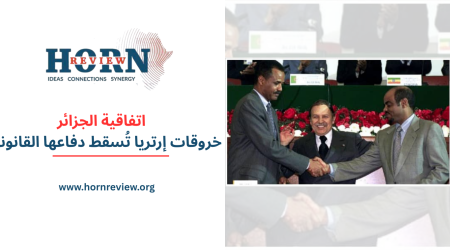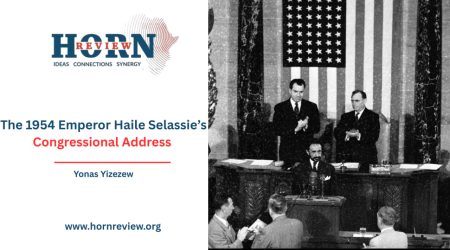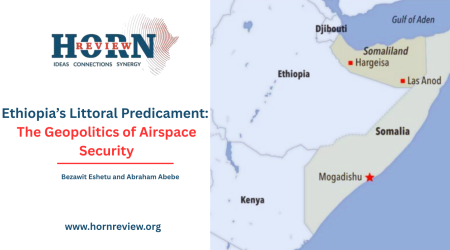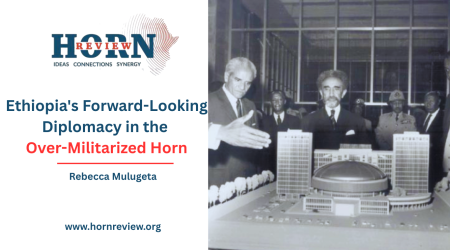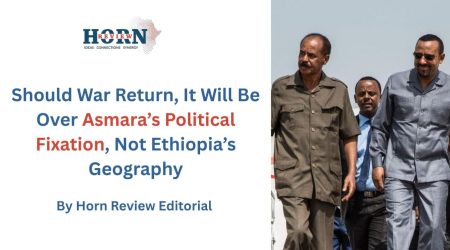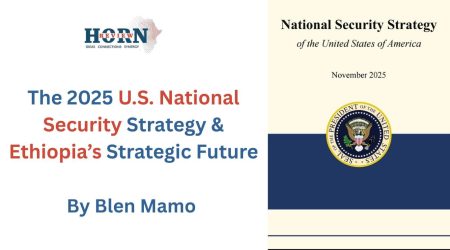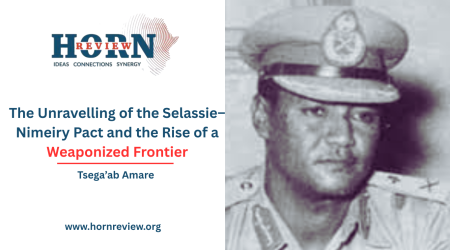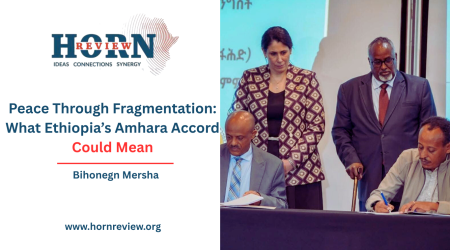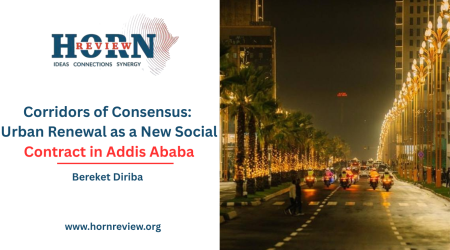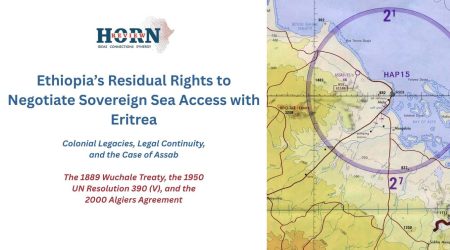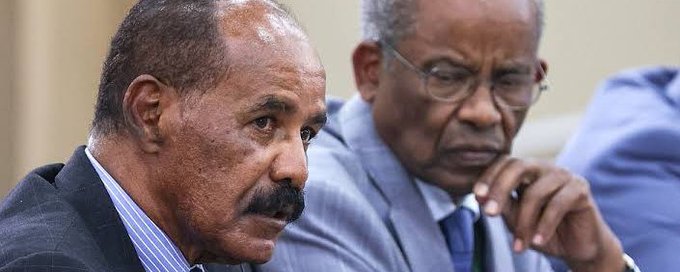
24
Jul
Isayas Afeworki’s Regime, Debretsion’s TPLF Faction & Ethiopia’s Federal Struggle
The Horn of Africa has long been a theater of strategic rivalries, deeply entrenched national interests, and conflicting political ideologies. Central to the latest upheavals is the peculiar and increasingly alarming alliance between Eritrean President Isaias Afwerki and the Debretsion-led faction of the Tigray People’s Liberation Front (TPLF). Their convergence, seemingly paradoxical given their historical enmity, raises serious questions about its true objectives and implications for Ethiopia’s federal unity, regional peace, and broader international alignments.
The central claim of this article is that the alliance between Isaias and the Debretsion faction of the TPLF is not a reconciliation rooted in shared values or long-term cooperation. Rather, it is a tactical and opportunistic maneuver driven by a mutual desire to undermine the Ethiopian federal government. The aim appears to be nothing short of transforming Tigray into a perpetual battlefield to complete what could not be fully achieved during the 2020–2022 war: the mutual annihilation of the TPLF and the decimation of Tigray’s social and political fabric.
Historically, Isaias Afwerki has never ceased to exert influence on Ethiopian internal affairs, even after Eritrea’s secession in 1993. His government has often acted more like a covert regional state than a sovereign neighbor, with internal policy and rhetoric overwhelmingly focused on Ethiopia rather than Eritrea. Isaias’s public speeches and interviews continue to reflect this obsession: much of his addresses delve into Ethiopian political developments, while his regime remains silent on its own country’s economic stagnation and human rights crisis.
The 2020–2022 Tigray war, initially justified by the Ethiopian federal government as a law enforcement operation, was seized upon by the Eritrean regime as an opportunity to eliminate the TPLF entirely. While the federal government aimed for containment and eventual peace, Eritrea’s forces operated with a more ruthless calculus. Numerous credible reports accuse Eritrean forces of committing war crimes, indiscriminate attacks, and systemic looting – actions that drew sharp criticism from the international community and eventually led to the Ethiopian government’s demand for Eritrean troop withdrawal (International Crisis Group 2025, The Sentry 2025).
This marked the beginning of a widening rift between Addis Ababa and Asmara. Eritrea’s refusal to comply with the withdrawal request was more than defiance it – was a statement of its ambition to entrench itself in Ethiopian affairs permanently. Simultaneously, Asmara rekindled its connections with factions like Fano, providing arms and training even before the Pretoria peace negotiations had concluded (The Sentry 2025). Ethiopia’s commitment to the Pretoria Agreement and subsequent efforts to reconnect the country with Eritrean ports underscored a genuine desire for regional peace. But the Eritrean leadership’s reaction made clear that it viewed peace as an obstacle to its hegemonic ambitions.
Isaias’s dream appears to be a Horn of Africa in which Eritrea serves as a puppet-master, leveraging fractured Ethiopian political dynamics to maintain his own relevance. Shielding Eritrean ports from development while demanding unrestricted access to Ethiopia’s resources reveals an exploitative agenda that Ethiopia cannot and will not accommodate. More disturbingly, Eritrea continues to operate as if it were an Ethiopian opposition group, not a sovereign state – persistently inflaming divisions, financing militias, and co-opting regional grievances to destabilize the federation from within.
The involvement of Egypt, a nation historically opposed to Ethiopia’s control of the Nile and the Grand Ethiopian Renaissance Dam (GERD), further complicates this alliance. Egypt’s strategic interest in weakening Ethiopia finds a convenient conduit in Eritrea’s ambitions and the internal instability fostered by the TPLF faction. The convergence of these actors – Eritrea, Debretsion’s TPLF, and Egypt – suggests not a grassroots alliance but an externally engineered coalition aimed at undercutting Ethiopian sovereignty (Chatham House, 2025).
The 2024 Memorandum of Understanding (MoU) between Ethiopia and Somaliland, which granted Ethiopia access to the Red Sea, was viewed by Eritrea and Egypt as a geopolitical affront. Their subsequent rush to form a tripartite opposition alliance – including support from various Somali and Sudanese factions – was transparent in intent: to isolate and pressure Ethiopia. However, Ethiopia’s diplomatic overtures, culminating in the Ankara Declaration with Somalia, reaffirmed its commitment to regional dialogue and de-escalation.
Still, the regional alignment remains volatile. Countries like Sudan, Djibouti, and Somalia cannot be firmly categorized in terms of allegiance should open conflict erupt between Ethiopia and Eritrea. Despite Eritrea’s narrative of being threatened by Ethiopia, the reality is that Ethiopia retains stronger political, economic, and diplomatic ties across the Horn. Eritrea’s continued projection of itself as the Horn’s resistance hub is a fragile illusion masking a collapsed state with no functioning institutions, virtually no press freedom, and a population in mass exodus.
Western powers must therefore exercise extreme caution in interpreting Eritrea’s tactical alliance with the TPLF faction. Isaias is not pivoting toward democratic ideals or stability; rather, he is exploiting the TPLF’s Western connections to reposition himself without altering his regime’s antagonistic posture. Supporting Eritrea or enabling the Debretsion faction under these circumstances risks compounding instability, undermining federal Ethiopia, and emboldening anti-democratic actors in a critical geopolitical zone.
Ethiopia’s federal government, for its part, has shown an enduring commitment to peace, integration, and balanced regional cooperation. Any resolution must prioritize the country’s unity, the well-being of all its regions, and the dismantling of alliances built on destruction and discord.
By Horn Review Editorial
References
Chatham House. 2025. “Tensions in Tigray Could Spark War Between Ethiopia and Eritrea: A Disaster Must Be Avoided.”https://www.chathamhouse.org/2025/03/tensions-tigray-could-spark-war-between-ethiopia-and-eritrea-disaster-must-be-avoided
Council on Foreign Relations. 2025. “Conflict in Ethiopia.” Global Conflict Tracker. .”https://www.cfr.org/global-conflict-tracker/conflict/conflict-ethiopia
International Crisis Group. 2025. “Ethiopia and Eritrea Slide Closer to War amid Tigray Upheaval.”https://www.crisisgroup.org/africa/horn-africa/ethiopiaeritrea/ethiopia-and-eritrea-slide-closer-war-amid-tigray-upheaval
The Sentry. 2025. “The Eritrean Defense Forces Intervention in Tigray.”https://thesentry.org/wp-content/uploads/2025/06/PowerPlunderEritrea-TheSentry-June2025.pdf

